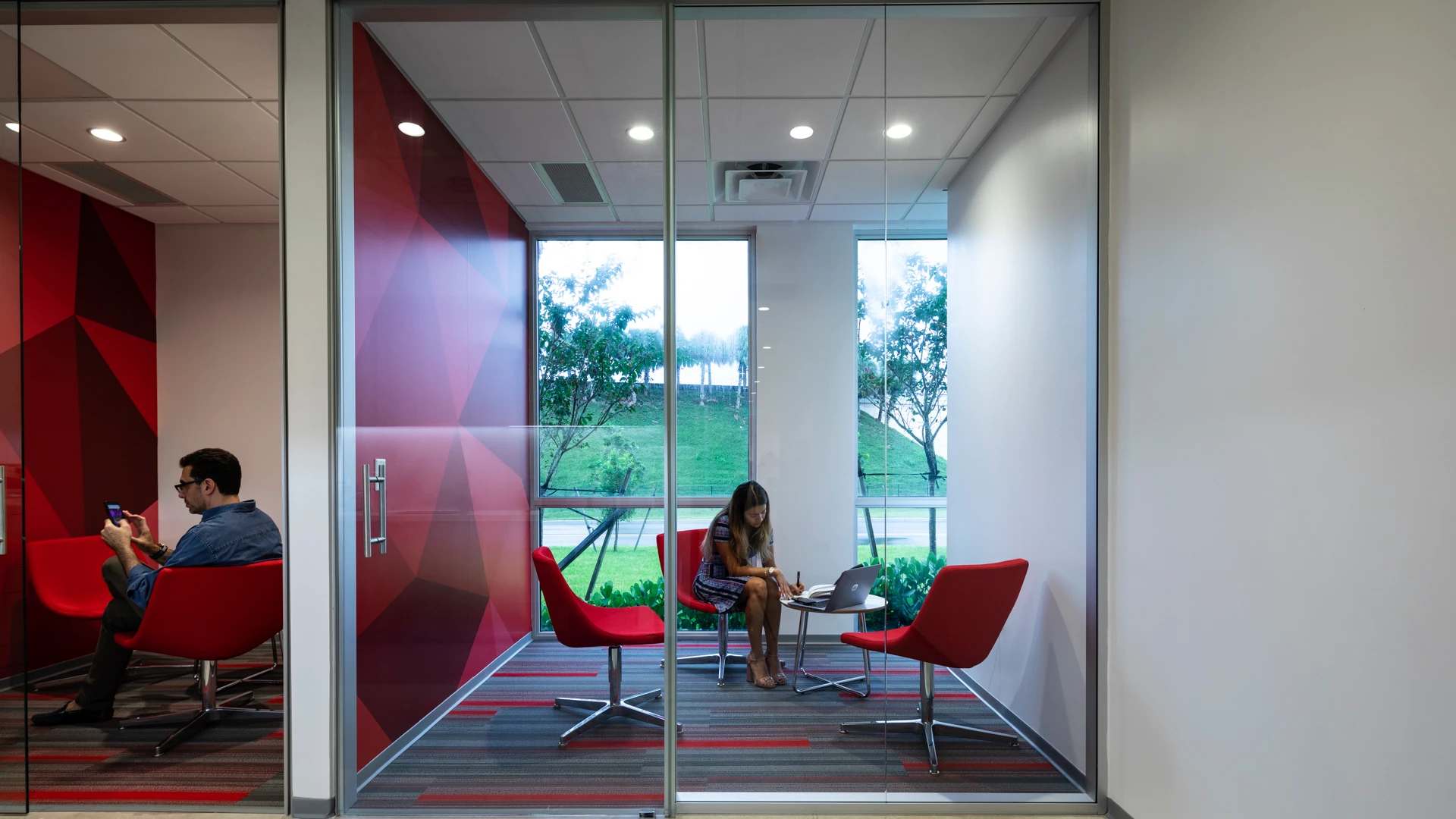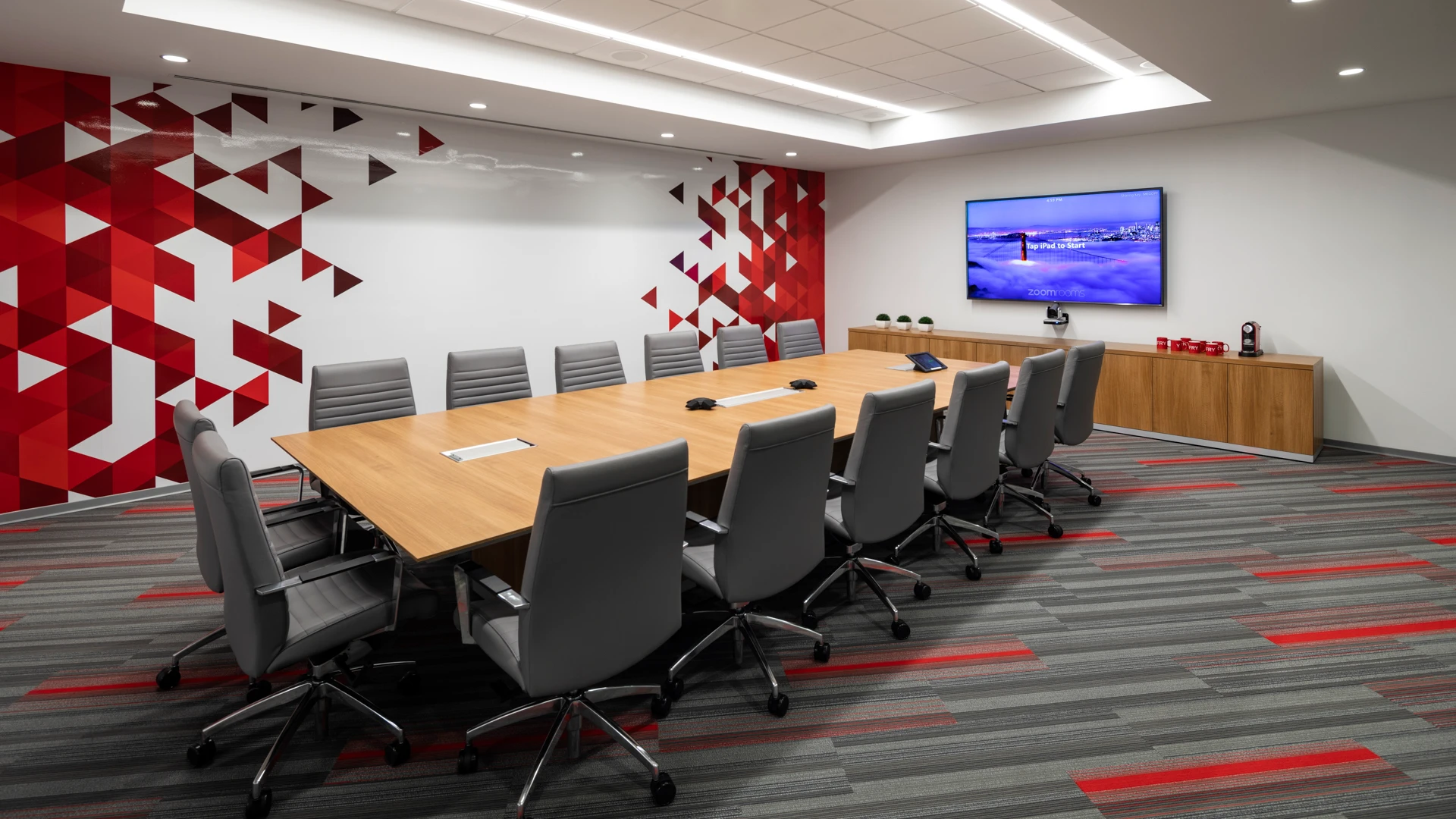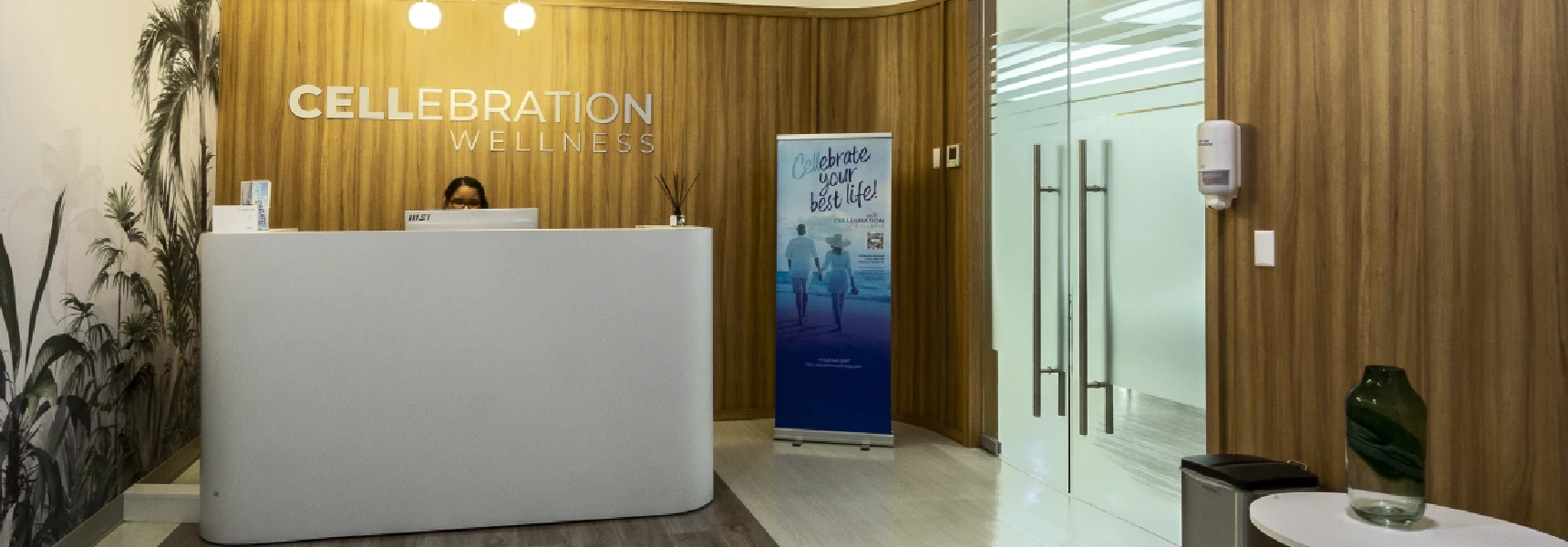Design
Designing Hybrid Workspaces: Innovative Strategies for Modern Offices

Images - Dufry - Desding Lead AI Spaces LLC
Hybrid work is no longer a temporary experiment; it’s the new normal for modern offices.
Over 90% of organizations are now adopting some combination of remote and on-site work, confirming that hybrid work is here to stayofficeprinciples.com.
This shift creates exciting opportunities for architecture firms to rethink hybrid office design in ways that support flexibility, technology, and employee well-being. Small architecture practices can leverage these trends to deliver high-impact solutions for clients adapting to modern, flexible work environments. The key is to blend strategic planning with creative interior office design so that workplaces serve both in-person collaboration and remote work seamlessly.
Open, collaborative workspaces with flexible layouts exemplify the kind of innovative workspace design companies now seek in their hybrid offices. Rather than endless rows of assigned desks, modern hybrid workplaces favor multi-purpose areas, lounge-style seating, and shared “hot desks” that employees use on an as-needed basis. The goal is to create an office that remains a vibrant hub for teamwork, innovation, and company culture – while still giving teams the freedom and hybrid workplace strategy flexibility they’ve come to expectofficeprinciples.com. In the sections below, we outline key design trends and actionable tips to help your firm excel in this evolving landscape and highlight how Design Hub’s expert solutions support you at every step.

Embracing the Hybrid Work Revolution
Designing hybrid work starts with understanding why offices still matter. Even as employees split time between home and office, the workplace plays an irreplaceable role in fostering face-to-face connection, spontaneous collaboration, and a shared sense of purpose. Many companies are actively reconfiguring their offices to better suit this reality, in fact, 81% of organizations globally have either completed or are planning an office redesign to meet new hybrid work needsfacilitiesdive.com. As a small firm, you should see this as an opportunity: businesses of all sizes need guidance to transform their offices into flexible, high-performing spaces. By staying current on hybrid trends and engaging in early workplace strategy discussions with clients, you can ensure the design aligns with how employees will actually use the space. For example, if analysis shows that employees come in mainly to collaborate, you might reduce the number of dedicated workstations and expand communal areas. (A recent survey found that 85% of employers’ office space was still allocated to individual desks, even though workers primarily go in to collaborate – no wonder 75% of employees want their offices redesigned for hybrid workfacilitiesdive.com.) Aligning design decisions with a client’s hybrid work policies – such as typical in-office days, team sizes, and remote technology needs – is a critical first step toward a successful outcome.
Key Trends in Hybrid Office Design
Staying on top of current design trends will help you craft modern offices that are both functional and inspiring. Here are some of the top hybrid workspace design best practices, along with tips to implement them:
-
Flexible, Adaptive Layouts: Embrace floor plans that can evolve. Rigid cubicles are out, in their place, use modular furniture systems and movable partitions that let companies reconfigure layouts on flyofficeprinciples.com. Spaces should flex from small focus nooks to open collaboration zones as needed. For instance, mobile whiteboards or foldable walls can subdivide a large area into breakout rooms for team huddles, then fold away to host an all-hands gathering the next day. This adaptability ensures the office never feels underutilized, even as attendance fluctuates week to week.
- Zones for Collaboration and Focus: Plan for a variety of work settings to support different tasks. In each day, an employee might brainstorm with colleagues in a project room, then need a quiet spot for deep work. Design your layouts with designated collaboration areas (think open team lounges or standing meeting tables) and quiet, enclosed spaces like phone booths or focus roomsframery.comofficeprinciples.com. Thoughtfully balancing “we” and “me” spaces is essential to maximize productivity in a hybrid workplace. Encourage clients to allocate more square footage to shared team spaces if their workforce is on a hybrid schedule – the payoff will be more vibrant during interactions and an office that people want to use.
- Seamless Technology Integration: A successful hybrid workplace strategy relies on technology that connects remote and in-person employees effortlessly. Make sure your designs include robust IT infrastructure and smart office tech. Equipping conference rooms with high-quality video conferencing systems, large interactive displays, and proper acoustics is a must for hybrid meetings. Consider integrating IoT-driven solutions as well – for example, occupancy sensors can help monitor space usage, while mobile apps let staff reserve desks or rooms on demandofficeprinciples.com. The goal is to eliminate any friction: a team in the office should be able to loop in colleagues on Zoom or Teams as naturally as if they were in the room. By incorporating user-friendly, adaptive tech (like wireless screen-sharing, smart boards, and room-booking apps), you create an environment where technology enhances collaboration rather than hinders it.
- Wellness and Comfort by Design: In hybrid arrangements, companies know that the office must earn employees’ commute by offering an attractive, healthy environment. Innovative workspace design today places a strong emphasis on employee well-being. This can mean introducing biophilic elements – natural light, indoor plants, green walls – which research shows boost productivity and satisfactionofficeprinciples.com. It also means paying attention to acoustics, air quality, and ergonomics. Encourage clients to incorporate adjustable sit-stand desks, comfortable breakout furniture, and maybe even wellness amenities (a small gym, meditation room or simply a cozy café area) to make the office more inviting. These design choices signal that the company cares about its people, helping to lure staff back on-site for the meaningful interactions a home office can’t provide.
- Branded, Inspiring Aesthetics: Don’t forget that hybrid offices are an expression of a company’s culture. The most effective designs use interior architecture and decor to inspire employees and reinforce brand identity. Bold use of color, local artwork, or displaying company values on the walls can all make the workspace feel uniquely “theirs.” In a hybrid era, the office is sometimes sparsely occupied – so every visit should be an experience. Use interior office design elements like lighting, graphics, and layout flow to craft a positive, energizing atmosphere that employees will talk about. An inspiring office that reflects the client’s mission will keep people coming in not out of obligation, but because they feel connected and creative when they’re there.

Technology-enabled meeting spaces are a centerpiece of hybrid office design. In the example above, a small team gathers in a conference room equipped for a virtual presentation – remote colleagues appear on a large screen, effectively “in the room” with them. When designing such spaces, prioritize excellent audiovisual setup (high-resolution screens, quality microphones and speakers) and an intuitive interface for launching calls. Features like interactive whiteboards or smart boards can further bridge the gap between in-person and remote brainstorming. By ensuring these hybrid collaboration rooms are easy to use and readily available, you help clients foster inclusion and teamwork between dispersed staff. Remember, the best hybrid offices make everyone feel equally connected, whether they’re dialing in from home or sitting around the table.
The evolution of hybrid work is reshaping what offices look and feel like. For small architecture firms, this is a moment to shine by guiding clients into the future of workplace design. By embracing flexibility, integrating technology, and prioritizing human-centric interiors, you can create modern offices that truly support the way people work today.
As you plan your next project, consider how the trends and tactics discussed here could elevate your client’s space from ordinary to extraordinary. A well-executed hybrid office design not only solves the practical challenges of remote vs. in-person work but can also inspire employees to do their best work when they come together. With thoughtful strategy and a creative approach, even a small firm can deliver a hybrid workplace that becomes a competitive asset for the client.



